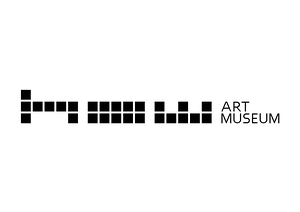Move on China 2019
December 12, 2019–March 15, 2020
Shanghai and Whenzou
China
Hours: Tuesday–Friday 1–10pm,
Saturday–Sunday 10am–10pm
info@howartmuseum.org
HOW Art Museum will host the exhibition Move on China 2019 marking the first year of the three-year project “30 Years of www and Media Art in China”. This three-year project includes a series of annual exhibitions and symposiums. In addition, a monograph in both English and Chinese based on the results of exhibitions and symposiums is due to be published in 2022 upon the project’s completion. The first collaborative exhibition of this project presents the works of three artists: Zhang Peili, Wang Jianwei and Feng Mengbo. Throughout their respective practices, each of them has endowed the new forms of media with their own internal reasoning, reflecting on recent social transformations and historical changes. The symposium will focus around the subject of creolization, globalization and sinocentrism, aiming to directly assess the state of contemporary Chinese thought from the perspectives of cultural theory, economics and regional studies.
Are the times really changing or is it just a spatio-temporal displacement of epochs and milieus? Imported “modern technics” have been internalized by China to such an extent that they have become instrumental to the continuous self-renewal of globalization. 30 years ago, the progressive spirit that the meeting of art and technology had initially adopted, gradually, then suddenly, turned into a “flooding of technological and visual information.” Perhaps there is nothing anachronistic about it, innumerable patterns of connectivity can exist at the same time, especially since the emergence of the World Wide Web some three decades ago when connectivity had ceased to represent the sublime. It is worth noting, that Indra’s net described in Avatamsaka Sutra bears many similarities to the concept of the World Wide Web. Indra’s net is a jeweled web that belongs to Sakra deva—the ruler of heavens. It is said to be woven of precious pearls, their numbers measureless, their light reflected in one another, vertex by vertex, ad infinitum.
Each of the three artists in this exhibition has been attuned to these new machines of visual production since the beginning of their respective careers. It is due to this keen sense and their use and appropriation of “the new”, that they have been widely acclaimed in international and Chinese contemporary art circles. Zhang Peili presents us with the control and transmission of information and discourse, the dislocation of public and private space, and the distortion of what it means to see and be seen. It’s within such a backdrop that he reveals in a hyperrealistic fashion the fate of the individual over a long span of time defined in terms of power. Through a series of videos, theater performances, installations, and sculptures, Wang Jianwei shifts semantics and the center, subverting and reconstructing subjectivity which is passed on to the audience in the form of hyperlinks. Feng Mengbo has injected fresh blood into contemporary art by intersecting technology and aesthetics in the form of electronic games, interactive installations, video, and music performances. At the same time, Feng Mengbo intertwines the work with alternative takes toward geography, the times and identity.
Let’s face it, we are all caught up in the whirlpool of globalization, whether we are aware of it or not. We live in an age where the theory that originates from the periphery has become the theory of the center, i.e., Nicholas Bourriaud is smart enough to claim “the end of postmodernism and the emergence of a new global altermodernity” in his 2009 “Altermodern Manifesto.” However, this “altermodernity” is no different from what Gerardo Mosquera discussed on the idea of creolization via the Havana Biennales, or what Okwui Enwezor tried to articulate in his 2003 DOCUMENTA. What the symposium attached to Move on China 2019 attempts to do at the conceptual level and as a research initiative is to refute the new theory of creolization in contemporary art, and to discuss the present and future of sinocentrism, two seemingly unrelated matters.
Creolization in contemporary art is, in reality, the fusion of cultures occurring at the meeting point of Western and non-western civilizations, the most immediate example being that of international art biennale, a format of art dissemination that has proliferated in recent years. Western contemporary art theory ceaselessly employs biennales as a means for its titular civilization to latch onto different cultures. This fusion ensures that dying ideologies and civilizations can exist forever as zombies in the regions outside the West. Therefore, the Western modernity lives on forever and can be, if needed, rejuvenated through cultural syncretism, which guarantees its survival.
With the exception of China, most of the world had once been colonized by the West. It is supposed to be the center of emancipation, and yet, what creolization refers to is, in fact, the gravest symptom threatening modern China. Therefore, through this exhibition and the accompanying forum, we dare to ask the question of the future of sinocentrism, whether it is a theory and a reality that will relive the theory and history of “creolization,” or it could evolve as a de-centralized method that may be taken up as a way to situate China as a core actor of anti-creolization, opposing it to both the West and China today.
–Yun Cheagab
Director of HOW Art Museum

